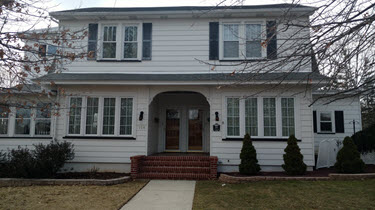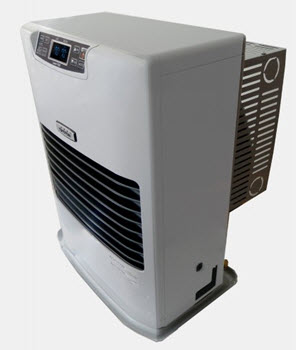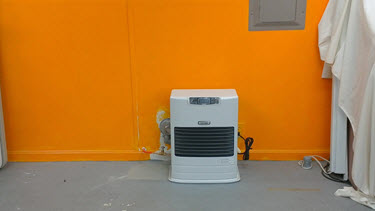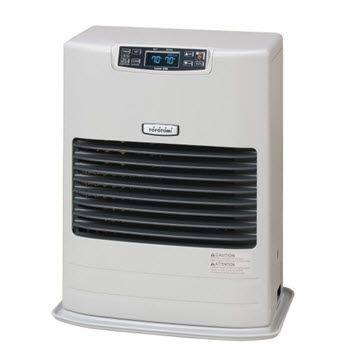Lehighton PA Homeowner Saves Money With New Oil-Fired Kerosene Heater
 Using a kerosene heater is great for heating a single room in a home. For years, our homeowner in Lehighton PA used one in his two-garage. He used it as a workspace and spent a lot of time there.
Using a kerosene heater is great for heating a single room in a home. For years, our homeowner in Lehighton PA used one in his two-garage. He used it as a workspace and spent a lot of time there.
However, like most garages, the heating system in the home doesn’t reach it. So, he installed the heater and connected it to his outdoor oil tank. It’s much more efficient than a standalone space heater. And, it does a better job warming up the room.
Problem: A homeowner in Lehighton PA wanted to upgrade their oil-fired kerosene heater. The current one was getting old. He wanted a model that would provide the same heat but cost less to run.
Solution: Installed a Toyotomi Laser 530 heater with a new oil filter cartridge.
Advantages Of Kerosene Heaters
 There are quite a few benefits of using an oil-fired kerosene heater versus electric or even propane heat. First, it was easy to install and didn’t cost a lot to do. And, the setup is very efficient.
There are quite a few benefits of using an oil-fired kerosene heater versus electric or even propane heat. First, it was easy to install and didn’t cost a lot to do. And, the setup is very efficient.
Unlike forced air systems, the heat does not travel through ducts. Ductwork is typical for most home HVAC setups. It’s how the heat gets to every part of the house. But, a drawback is that not all the forced air makes it to the vents. Some of it gets lost along the way.
That’s not as much of a problem with these units, however. In this case, the oil reaches the heater, which is inside of the room. Then, it’s combusted and converted into heat. That doesn’t happen until it’s in the area that needs the warmth.
Finally, our homeowner already used oil heat for his home. That made it very simple to set up his heater to use oil. This way, he doesn’t need to buy kerosene and manually fill the heater whenever he wants to use it.
For these reasons, our homeowner has been happy with an oil-fired heater in his garage. But, the one he had was getting old. It was no longer working as well as it used to.
Our homeowner decided to invest in a new one before the old one finally broke down for good. This way, he could take his time finding a suitable replacement before he needed to buy one right away.
Upgrading A Heating System
 When our homeowner decided to replace his old heater, he wanted to upgrade his HVAC system. It was an opportunity to find a model that cost less to run.
When our homeowner decided to replace his old heater, he wanted to upgrade his HVAC system. It was an opportunity to find a model that cost less to run.
By the time he called OHL, our homeowner had already done some research. He had some questions for our tech but was close to making a decision. After going through the options and answering his questions, our homeowner decided on a Toyotomi Laser 530.
This model had quite a few advantages over his old heater. Put simply, it was a little more powerful but would cost a little less to run. Here’s how the numbers broke down.
First, we looked at the Annual Fuel Utilization Efficiency rating. Also known as AFUE, this is a measure of how much fuel gets used for heat. Any heater will lose some of the fuel it uses through the exhaust.
When looking for HVAC efficiency, you want to find the model that loses as little fuel as possible. That way, you get the most out of the fuel you’re paying for.
 In this case, our homeowner’s old heater is rated at 84 percent for AFUE. The rating means 16 percent of the fuel it uses got lost to exhaust. The new one, however, has an 87-percent rating. That means three percent more of the fuel it uses actually goes toward heat.
In this case, our homeowner’s old heater is rated at 84 percent for AFUE. The rating means 16 percent of the fuel it uses got lost to exhaust. The new one, however, has an 87-percent rating. That means three percent more of the fuel it uses actually goes toward heat.
The new heater can also heat a slightly larger area. In this case, that’s not as big of an issue as it would be in other areas. The old heater could handle 900 square feet, while the new one heats up to 920.
Both those sizes are much larger than most two-car garages. But, the measurements speak to the strength of the new heater. It wouldn’t have to work anywhere near its capacity to do the job.
Finally, there is warmth itself: Both heaters can produce up to 22,000 BTUs, or British Thermal Units with oil heat. But, the new heater has a higher AFUE and can handle a larger area. Together, this means that it will use less fuel — and therefore cost less to run — than the old one.
Of course, however, those measurements are based on both units operating at peak capacity. The old heater was older and wasn’t working quite as well as it used to. And, we did a little more work to increase the new system’s efficiency.
Improve Heater Efficiency With A New Oil Cartridge
 The final piece of work we did was replace the oil cartridge in the heater. The replacement is an easy thing to do, and we made sure to include it before we wrapped up. It ensures that the new heater will start off working at its best.
The final piece of work we did was replace the oil cartridge in the heater. The replacement is an easy thing to do, and we made sure to include it before we wrapped up. It ensures that the new heater will start off working at its best.
The oil cartridge is a filter that helps keep your system clean. It’s common for some dirt and debris to make its way into an oil tank. In fact, any tank that’s even a few years old will have at least some “sludge” in the bottom of it.
What the cartridge does is prevent that debris from making its way all the through the system. If it’s not there, the pump and burner fuel nozzle will get clogged. Those clogs make the heater run less efficiently. It will need more fuel, and more power, to push out the warm air.
Eventually, a clog leads to a “boiler lockout.” That’s when the system won’t turn at all because of an internal problem. When a lockout happens, you’ll need to reset the machine and read the error code it provides.
With any luck, the code will be for something easy to fix. But, sometimes you’ll need to call out a tech.
For this replacement, we made sure to add a new oil cartridge. Experts recommend changing out the oil cartridge once when you start using the heater and then again midway through the winter.
In this case, we made sure the new heater had a new cartridge. That way, our homeowner could turn it on for the first time knowing he’d be saving money with his new system.
If you are looking to explore ways to save money on your heating bills or have a problem with your current system, give us a call here at RF Ohl. We have the experience and the know how to make sure you are comfortable in your home, every day of the year, and save money at the same time.
